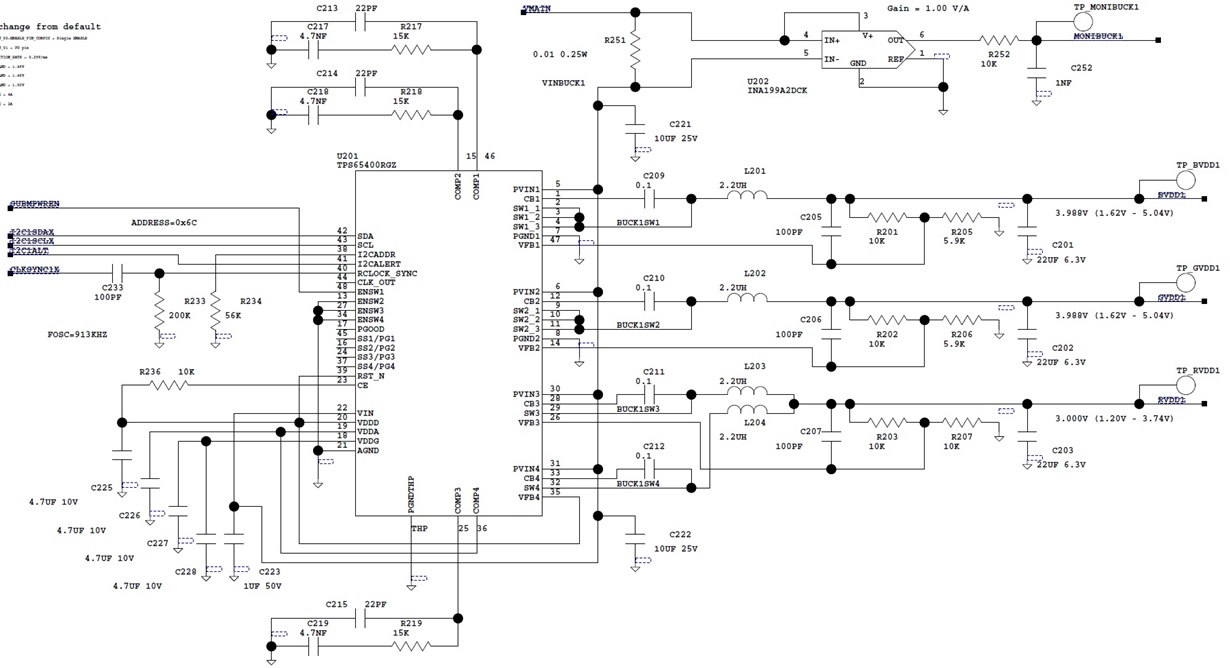Hi, I cannot find any documentation on the input capacitor requirement for the TPS65400. My outputs are +4V at 1, 2, and 34 When I designed my board, I use one 10uF at the PVIN12 side and one 10uF at the PVIN34 side. What I found is that if the input voltage goes very low below about 7V and with high 3-4A current on all outputs, there will be oscillation of about 5kHz at the input terminal. This looks like sub-harmonic oscillation. It seems like it cannot be cure by any changes in the compensation RC network, changes in the slope compensation programming, or output phase change programming. The only way I can cure the oscillation is by adding a very large 100uF input decoupling capacitor on both side. Then I went back to the EVM which uses 22uF on both side and tried the same test. I found that the EVM also exhibit a small amount of instability at the same condition, although it does not go directly into the oscillation mode. I wish TI can provide better documentation and application regarding the input capacitor requirement.
-
Ask a related question
What is a related question?A related question is a question created from another question. When the related question is created, it will be automatically linked to the original question.



